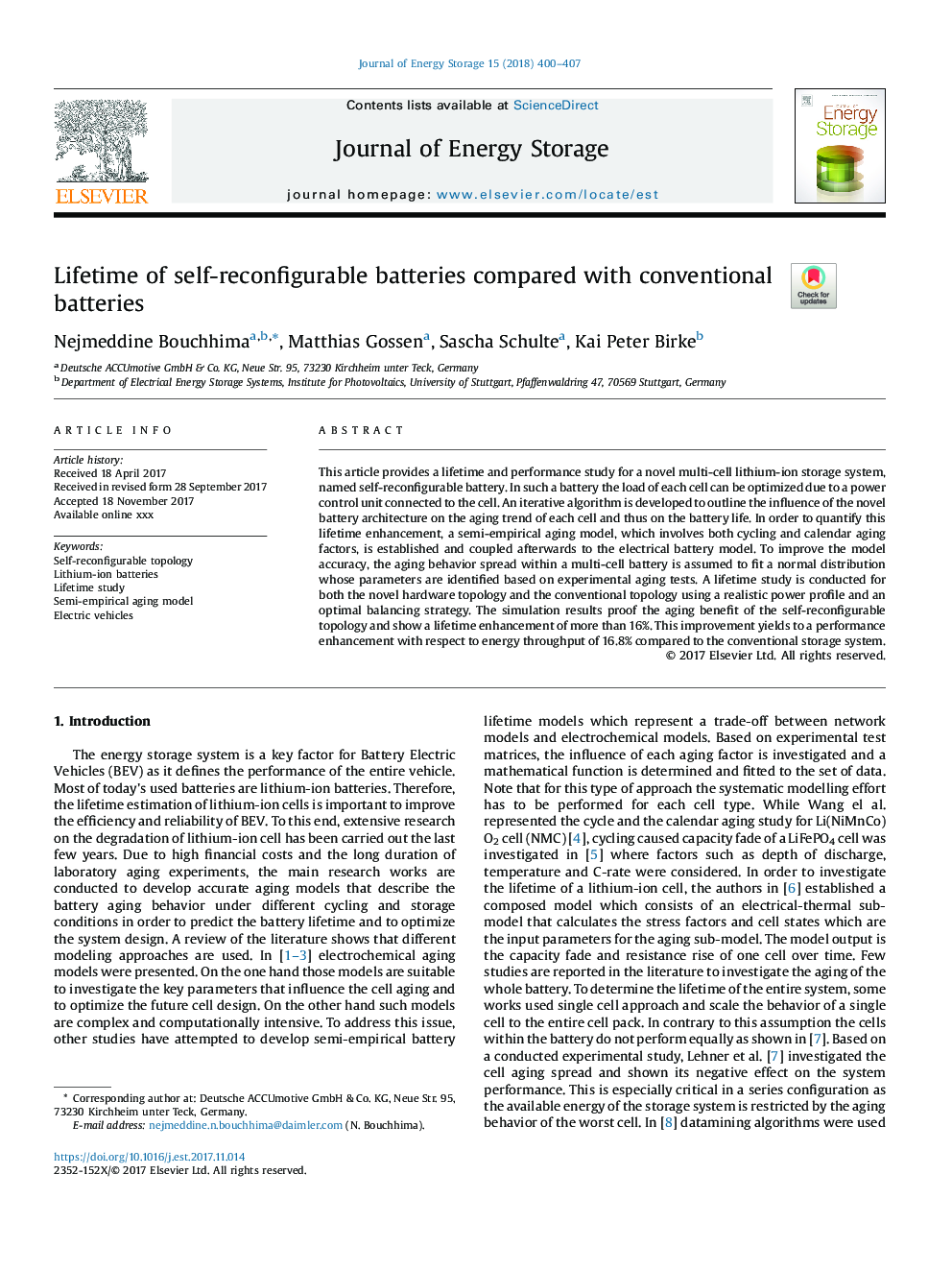| Article ID | Journal | Published Year | Pages | File Type |
|---|---|---|---|---|
| 7540289 | Journal of Energy Storage | 2018 | 8 Pages |
Abstract
This article provides a lifetime and performance study for a novel multi-cell lithium-ion storage system, named self-reconfigurable battery. In such a battery the load of each cell can be optimized due to a power control unit connected to the cell. An iterative algorithm is developed to outline the influence of the novel battery architecture on the aging trend of each cell and thus on the battery life. In order to quantify this lifetime enhancement, a semi-empirical aging model, which involves both cycling and calendar aging factors, is established and coupled afterwards to the electrical battery model. To improve the model accuracy, the aging behavior spread within a multi-cell battery is assumed to fit a normal distribution whose parameters are identified based on experimental aging tests. A lifetime study is conducted for both the novel hardware topology and the conventional topology using a realistic power profile and an optimal balancing strategy. The simulation results proof the aging benefit of the self-reconfigurable topology and show a lifetime enhancement of more than 16%. This improvement yields to a performance enhancement with respect to energy throughput of 16.8% compared to the conventional storage system.
Related Topics
Physical Sciences and Engineering
Energy
Energy (General)
Authors
Nejmeddine Bouchhima, Matthias Gossen, Sascha Schulte, Kai Peter Birke,
